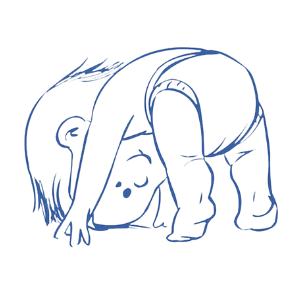Marine Delvigne, microkiné at the Center Nestia in Auderghem, Brussels receives the babies, children and adults in microkinesitherapy session.
Consultation reasons :
- Sleep disturbances
- Attachment disorders
- Food difficulties
- Social difficulties
- Stress – angoisse – burnout
- Generally
- Recurring pain
- Difficulty letting go
The human body, like any living organism, is designed to adapt, defend and self-correct in the event of traumatic assault, emotional, toxic, viral, microbial or environmental. When the aggression is greater than the body's defense possibilities, the vitality of the body tissue concerned will be altered. There is "memorization" of the aggression. The change in tissue vitality can cause different local or remote manifestations to appear.
Microkinesitherapy uses a specific manual micropalpatory technique to find the traces left by these attacks in the various tissues of the body. Its action consists of manually performing acts that stimulate self-correction mechanisms in order to prevent tissue degradation and restore their functions.. The practitioner's hands mobilize and stimulate the different tissues depending on the type of aggression
This technique is applicable to all ages of life, for therapeutic purposes or not.
Keywords:
- assault : external event, of any possible origin disturbing the individual.
- tissue vitality : ability of a tissue to palpably manifest its normal state of functioning.
- micropalpation : interrogation made with two hands on a living tissue allowing to control the integrity of its vitality.
Course of a session:
The average duration is 30 at 45 minutes.
After indicating the reasons for his consultation, the person will lie down on the consultation table, most often while remaining dressed. Vital rhythms are easier to perceive through light clothing. The therapist is not “distracted” by other perceptions and the person feels more comfortable.
The first part of the work is a micropalpatory research allowing us to find the etiology responsible for the observed disorder., It ishighlighting thepathogenic scars.
The second part consists ofsearch for thesymptom which results from it. Concretely, the therapist holds the cause in one hand (to the scar) and searches with the other hand for the consequence (the symptom) scanning the midline of the body looking for the affected level. Once the floor is defined, he is looking for, by transverse palpation of this level, by transverse palpation of this level.
by transverse palpation of this level, by transverse palpation of this level. by transverse palpation of this level. by transverse palpation of this level, the dating of the trauma is interesting information to collect because it allows the patient to better locate the origin of the disorder. Understanding the past causes of present pain, it’s also about prevention.
Once identified and located, the scar is stimulated what will trigger the self-healing processes, almost instantly. It’s a live dialogue with the person’s tissue memory, performed by palpation, without other support. The self-correction mechanism is obtained in this way, on adults as well as babies or animals.
After the session
Major disorders, which could not be managed in a timely manner and which is related to the reason for consultation, were found and awakened, presented again by the therapist. After the session, the body begins to evacuate them by triggering an elimination mechanism. The person, very often, will feel tired during 48 hours. During these two days, pain or emotions linked to the released pathogenic scars can come to the “surface”. People are advised to hydrate well and not make unnecessary efforts in order to facilitate this elimination..
Number of sessions required
A second session can be considered a few weeks later, if the first was not enough, or within a shorter time if the problem is acute. Three sessions for the same symptom are a maximum, beyond that the therapist must have the honesty to redirect the person knowing, or that he has not been able to find the responsible etiology, either that the pathology has reached a stage of non-recovery. Two or three annual sessions can also be considered to maintain a good state of health.. At last, certain evolving pathologies may require regular sessions.
Cost of a session 70 – 80 euros depending on the duration
